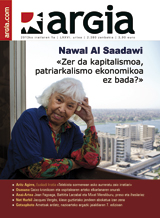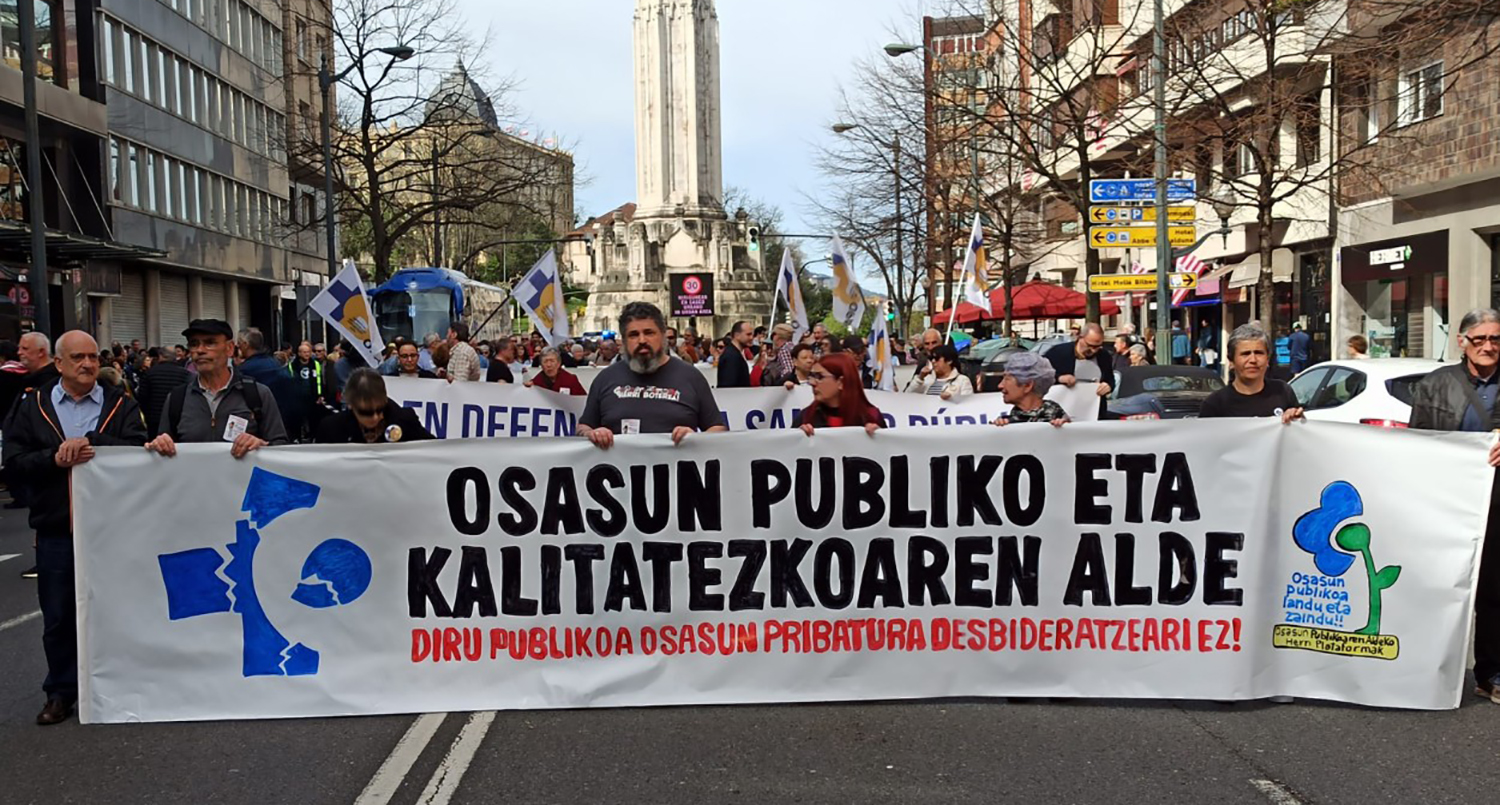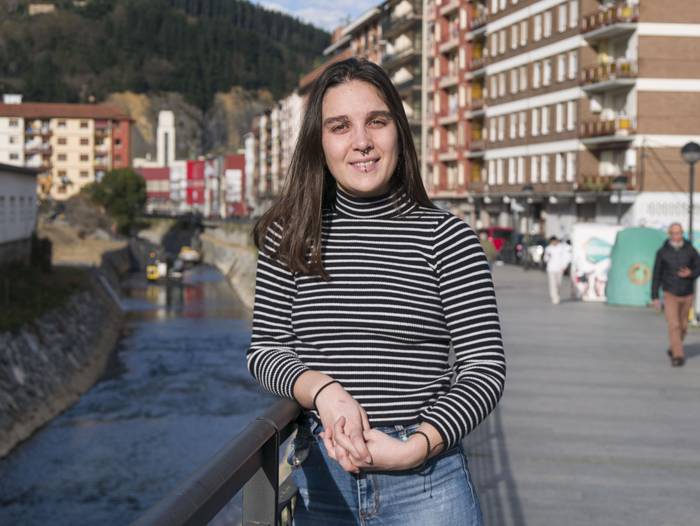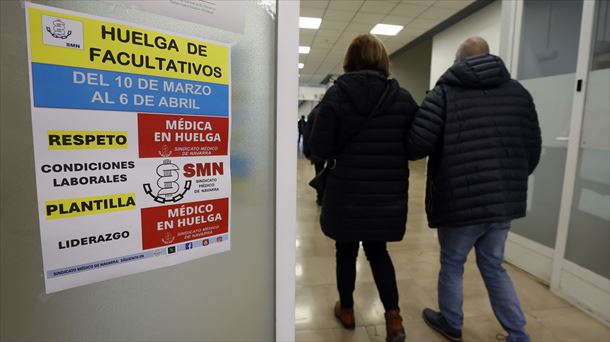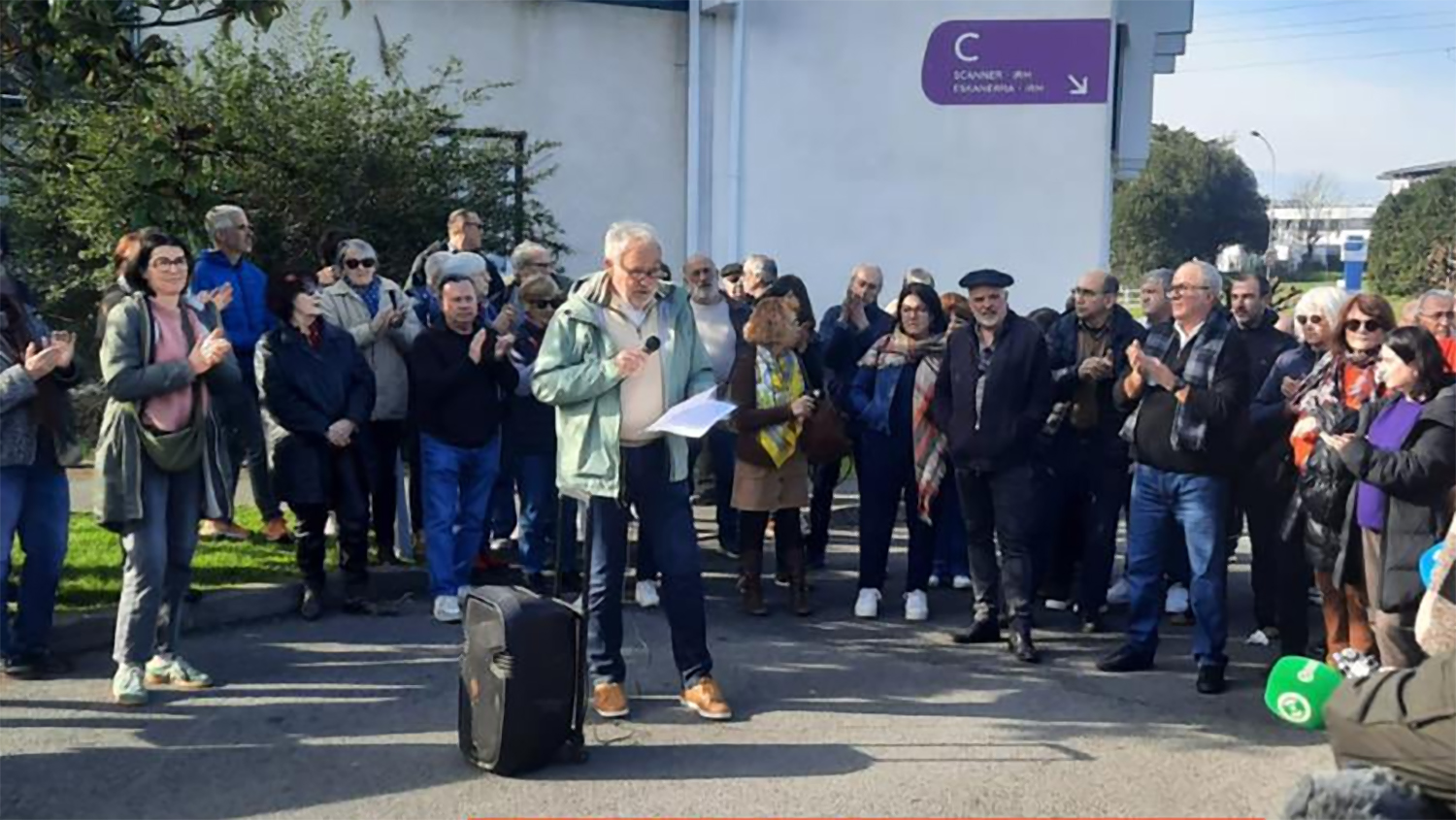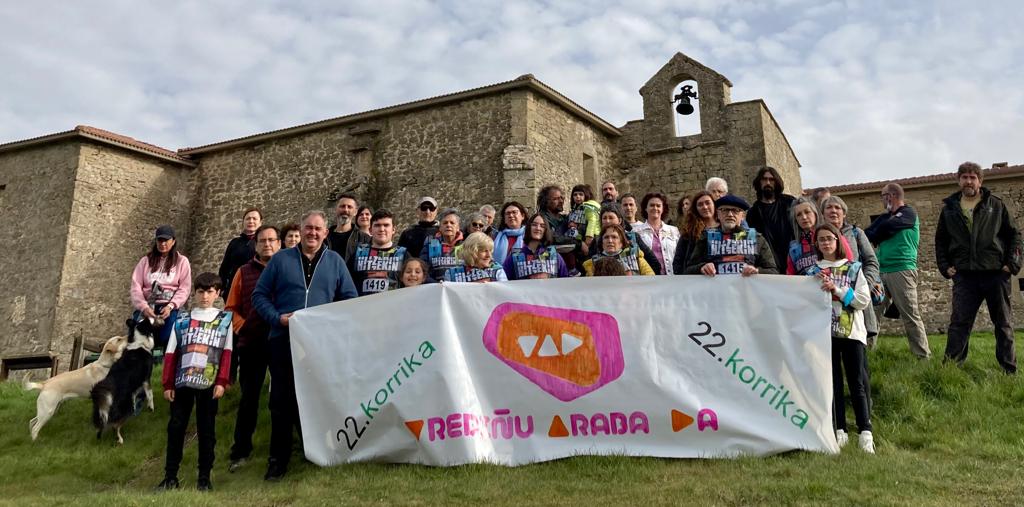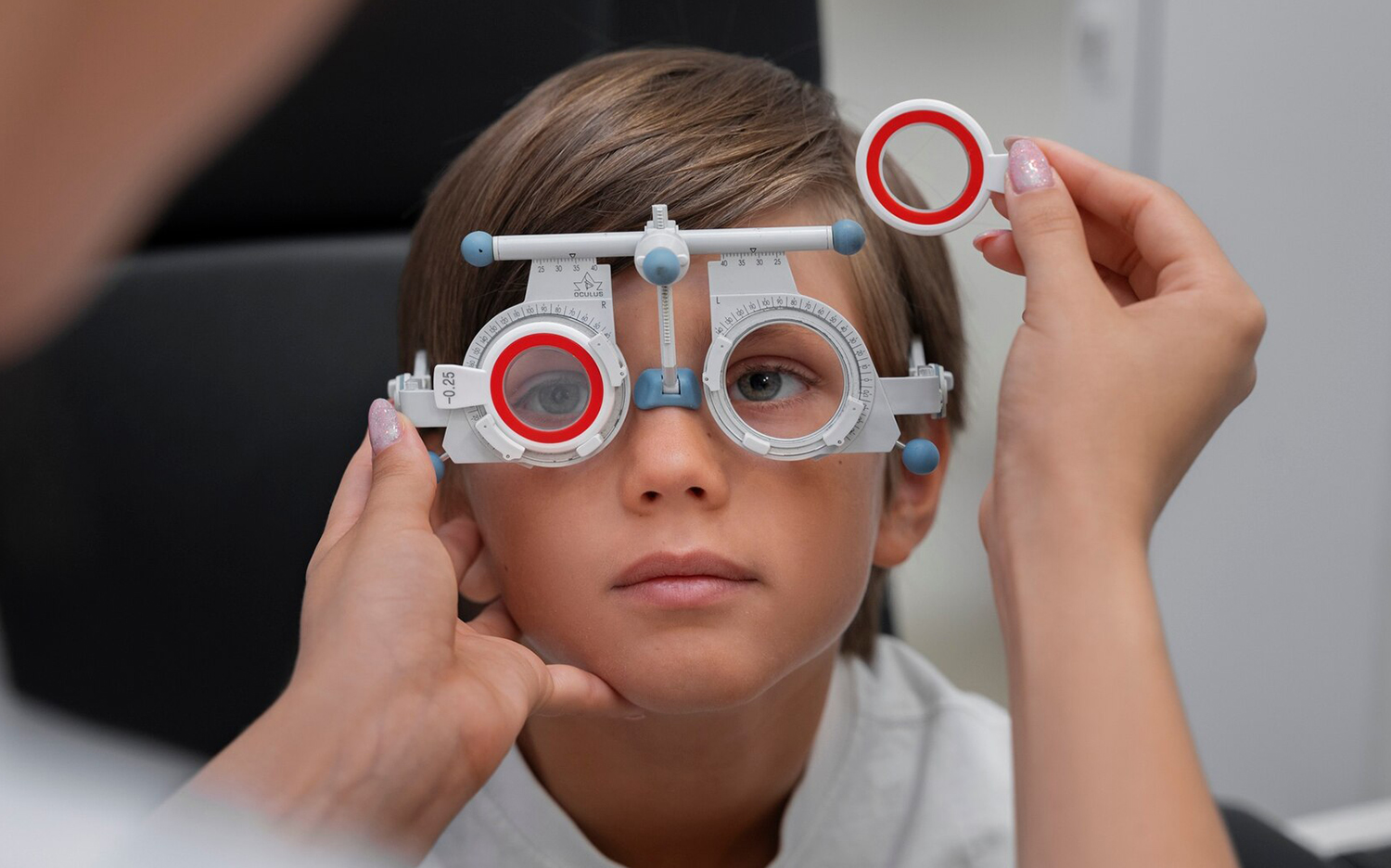Own evil, in the hands of oneself
- The Hospital Donostia has two objectives for the chronically ill: on the one hand, to improve their quality of life and, on the other, to minimize their impact on the health system. To do so, chronic patients are taught to know their disease and are offered a team of reference health professionals.
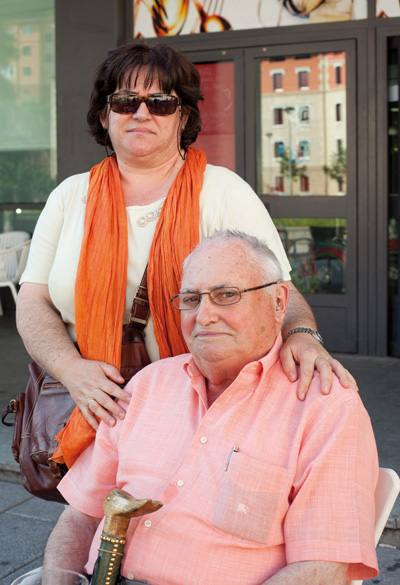
In the Donostia Hospital, during the years 2003-2004, it was discovered that a group of patients came again and again to the hospital. These patients spent 23,000 days in hospital beds. The group of hospital workers who conducted the study had many questions: Who are the patients who come to the hospital? Can we predict which ones are coming back? What can we do so they don't come? The physician Jose Artetxe is responsible for the Fragile Unit and is immersed in the work carried out through Evidence-Based Medicine: “It’s not about patients not coming to the hospital. It is about attending to the problems of patients and taking into account the structural deficiencies that the hospital itself has”.
Most of the patients who went to hospitals repeatedly realized that they had heart and respiratory diseases. The patients were not happy with the way they were treated, they felt like a lump that goes back and forth. In the hospital, the doctor who would treat them is not known, sometimes the medication that had been practiced to them until then is changed, even if only the name of the drugs is changed.
After reviewing the international scientific literature, the program was launched in 2005. The chronic patient would always have in the hospital the same doctor to call, write and make face-to-face consultations. The nurse would call her home and ask several questions to keep track of the disease. If you feel unwell and need to go to the hospital, without going through the emergency room, your doctor will treat you. In the worst case scenario, i.e. if the patient goes to the emergency room, the note would be recorded on the computer: Urlia is a chronic patient and her doctor is such. They would not go to any hospital room, but to the hallway where their doctor works.
In addition to following these general criteria, the patients had a pocket computer to insert the data and send it to the hospital. There was also a button to call 112 emergency. The difference was immediately observed in the Donostia Hospital: visits of the chronically ill in the emergency room fell by 80% and the days of hospitalization the same. From 2005 to the present several tests and modifications have been carried out. The computer has been removed from the pocket and contact via the Internet has been boosted. Thus, the results have also been significant: emergency visits have decreased by 70% and days of hospitalization have decreased by 70%.
Joan Migel Landa has been in hospital for a year
Joan Migel Landa is 83 years old and has 84. It belongs to the Old Part of Donostia-San Sebastian, although it lives in the Benta Berri district. If he leaves the house early and late, he doesn't like to be between the four walls. It has a couple of txakolis and pintxos, almost every day. She lives alone because she wants to, although she has her children very close.
Landa suffers from chronic lung disease and has cardiorespiratory arrest. About five years ago, in the summer, he had to be admitted to a hospital three times. He lost many kilos at that time and at each hospitalization the general physical condition decreased. Suddenly, he met Dr. José Artetxe's team, who was drunk. By then, the program for the chronically ill was already underway. From that moment on, the relationship between the patient and the health service would be different. Landa would have a specific team of health professionals. I would have the phone of Dr. José Artetxe and the name, last names and phone number of the doctor who would take care of him if he was not working. He began to go to the Donostia Hospital, where Artetxe was, every month to pass the routine exam. Every fifteen days, Nurse Isabel Huerta would call her home to ask her about her situation.
With the broken road, Artetxe asked the daughter of Juan Miguel, Arantza (the nurse): Could your father use your pocket computer? Her daughter was very hesitant. “Is the father over 70 years old and now he has to start with such a gadget? I have to write to him: ‘Now press this button, then this other...’, and every week we will have to alternate the siblings to enter the data.” Fifteen days after starting to use the computer, the father rebuked his daughter: “But what do you think, that I’m silly? Do you think I'm not going to be able to perform with this device? Leave me alone!”
During the 18 months that the test lasted, Landa used a pocket computer, a voltage apparatus and a pulse meter to analyze the situation. The data for the last two came directly into the small computer. Other information, like the heart rate and oxygen saturation, would introduce it with the digital pen into the pocket computer.
For the 83-year-old Donostiarra, the small computer of the Real Sociedad had only advantages. Since then he has had to be admitted to the hospital, but not as much as at first. He's come to the emergency room in a better state, has had fewer nights in the hospital bed and has recovered more quickly when he's gone home. Her daughter Arantza Landa, nurse, has detected the change: “The father has learned to recognize the symptoms, knows what it means to swell his ankles, knows what asthma is and knows what symptoms are severe and when he has to give the warning. It used to feel bad but it remained untold, and now that it has such a serious symptom, call us relatives or press the button for the 112 to answer.”
Jump to Internet
Landa perfectly adapted with the pocket computer, but taking into account the parameters of efficiency and economic spending, the test was suspended. The next challenge was to use the Internet in the relationship between the patient and the hospital. Landa did not dare to take that leap, and although she lost her autonomy, her daughter started using the Internet. If you don't call her during the day, her daughter knows her father is fine, so on the website that the hospital has prepared at night, fill out the questionnaire with nothing unusual: the ankles are not swollen, the heartbeat... On the other hand, if the father has a fever, the daughter will answer in the questionnaire yes to the question “Do you have a fever?” The conclusion is immediate, the note shall be sent immediately: “Start taking paracetamol every eight hours.” In the mornings, the doctor reviews the questionnaires of chronically ill patients and if he/she wants to modify or adapt the response of automatism, he/she does. The chain works better and better: the father immediately detects the symptoms, notifies his daughter, introduces her to the computer, tells him what medication to take, the doctor supervises that process. Arantza has finally recognized that every symptom knows what the computer is going to respond to and that many times he is not waiting for the device to take the medicines. Doctor Artetxe has confirmed that more patients have learned to take medication that corresponds to them when detecting symptoms. Arantza is clear that the quality of life of the father has been better in recent years: “If symptoms are detected and the remedy is administered quickly, the father becomes less unbalanced, recovers more easily. We are talking about a period of five years and in this last year he has not had to be admitted. I am quiet thanks to the internet and the tele-alarm [the small button that gives to 112]”.
We asked Landa if she took a lot of medication and pulled a plastic card out of her shirt pocket. Take more than ten medications, remember the names and what each one serves for. She's always wearing a little strip. He is very pleased with the team and the way the hospital works: “Now I feel much better. Before I had any doctor and now always Artetxe. He knows what I am and what I have.” The physician and the work team become a reference for the patient and trust is more easily strengthened.
Visits by Juan Ramón Camino
The doctor Juan Ramón Camino, from Errenteria (Gipuzkoa), told him that he had been with a leg in the other world. After a year of reds he was diagnosed with pericarditis, that is, the membrane containing the heart and the large blood vessels was swollen. A year ago he was told that and on July 31 last year he had surgery to remove his membrane. Camino is a chronic patient and this last year has the same doctor, Xabier Goikoetxea. At Hospital Donostia, visiting dates have been established and every fifteen days nurse Huerta calls him. The trip to the hospital serves to greet the health team attending him, the whole team knows the Camino de Errenteria. Like Landa, she has no computer communication and we ask her how she does it: “I know where to call, I have the phone of nurse Huerta and the doctor. If I notice something I call. I don't do like the old ones, they don't call for not worrying. It’s about calling before it’s late, that doctors don’t find the patient past the border.” And how does Camino know when he needs to call? “In these two years I have learned a lot, I know when to call it: when I have swollen legs, when I’m tired, when I hear in my lungs the noise of fluid bubbles..” He cannot work for pericarditis and has to lead a quiet life. There have been no startles since the surgery. We asked him what he thinks of his relationship with the hospital as a chronic patient: “I’m very happy. On the one hand, I have been saved from life in that hospital, and on the other, my relationship with doctors and nurses is very good.”
Since 2005, ways have been opened to improve economic profitability and patient care. The latest innovation has been the use of the Internet. However, it is clear that while the network serves some patients to achieve more autonomy and better communication, others have lost the opportunity to develop on their own. One example of this is Joan Migel Landa. The computer in his pocket was used by himself and when the Internet has come, his daughter has taken over. Most chronically ill people are old and this generation has had very little connection with the Internet. This is the question that the Donostia Hospital asked the Farapi-Evidentis consultation: What can we offer to those who don't use the relationship over the internet? Consultoria asked a series of questions to more than a hundred chronic patients and held several meetings with them. They wanted to know who and how much they lived at home, what technological gadgets they could use, what relationship they had with social services ... Farapi-Claris understands that the Internet is one of many options and that other ways must be explored and sought so that care for the chronically ill is as cheap as possible and they feel satisfied and well cared for.
Berrogei urte dira Euskal Herrian autismoaren inguruko lehen azterketak eta zerbitzuak hasi zirela. Urte hauetan asko aldatu da autismoaz dakiguna. Uste baino heterogeneoagoa da. Uste baino ohikoagoa. Normalagoa.
Itxaron zerrendak gutxitzeko Osasunbideak hartutako estrategiak gaitzetsi ditu Plataformak
Endometriosiaren Nazioarteko Eguna izan zen, martxoak 14a. AINTZANE CUADRA MARIGORTAri (Amurrio, 1995) gaixotasun hori diagnostikatu zioten urtarrilean, lehen sintomak duela lau urte nabaritzen hasi zen arren. Gaitz horri ikusgarritasuna ematearen beharraz mintzatu da.
La bajona kolektibo kide Heiko Elbirak salatu du psikiatriak zisheteroarautik aldentzen diren erotikak kontrolatu nahi dituela.
Barakaldoko ospitaleko larrialdi zerbitzuan sufritzen ari diren "saturazioa larria" dela ohartarazi du sindikatuak. Pazienteak korridoreetan artatu dituztela eta krisia kudeatzeko "behar adina langile" ez dagoela salatu du. Errealitate horren aurrean... [+]
Astelehenean abiatu da sindikatuak deitutako greba eta apirilaren 6 arte luzatuko da. Lan-gainkarga salatu eta baldintzak hobetzeko eskatu dute, baita mediku egoiliarrei karrera profesionala aitortzea ere.
Alberto Martinez Eusko Jaurlaritzako Osasun sailburuak argi dio: ez ditu mediku euskaldunak aurkitzen, eta euskarazko osasun arreta ezin da bermatu mediku egoiliar (formazioan dauden espezialista) gehienak kanpotarrak direlako. Mediku euskaldunak bilatzea perretxikotan joatea... [+]
Soco Lizarraga mediku eta Nafarroako Duintasunez Hiltzeko Eskubidea elkarteko kidearen ustez bizi testamentuak heriotza duin bat eskaini eta familiari gauzak errazten dizkio.
Gauez ia aste osoan ateak itxita izaten ditu Donibane Lohizuneko osasun zentro horretako larrialdi zerbitzuak. Herri Berri udal oposizio taldeak deituta, mobilizazioei ekin diete herritarrek eta jadanik 3.000 sinadura bildu dituzte zerbitzu "iraunkor eta eraginkorra"... [+]
Bizilagunek "egia eta politika" merezi dutela adierazi dute, oraindik konponbiderik bilatu ez zaizkien arazo ugari edukitzen jarraitzen baitute. Ikasketei eta osasun arretari loturiko arazoak nabarmendu dituzte.
Udaberri aurreratua ate joka dabilkigu batean eta bestean, tximeletak eta loreak indarrean dabiltza. Ez dakit onerako edo txarrerako, gure etxean otsailean tximeleta artaldean ikustea baino otsoa ikustea hobea zela esaten baitzen.
Gazteagotan baino lotsa handiagoa dauka, baina horrek ez dio saltsa askotan ibiltzeko gogoa kentzen Leire Zabalza Santestebani (Iruñea, 1990). Beste gauza askoren artean, Motxila 21 musika taldeko kidea da. Nabarmendu du musika gauza asko aldarrikatzeko bide izan... [+]
Miopia gero eta gehiago eta gero eta lehenago ari da garatzen, eta horren arriskua da dioptriak gehitzen joatea eta helduaroan begiari lotutako hainbat gaitz izateko aukerak dezente handitzea. “Eguzki-argia jasotzea inportantea da, eta denbora asko ez igarotzea oso gertu... [+]









